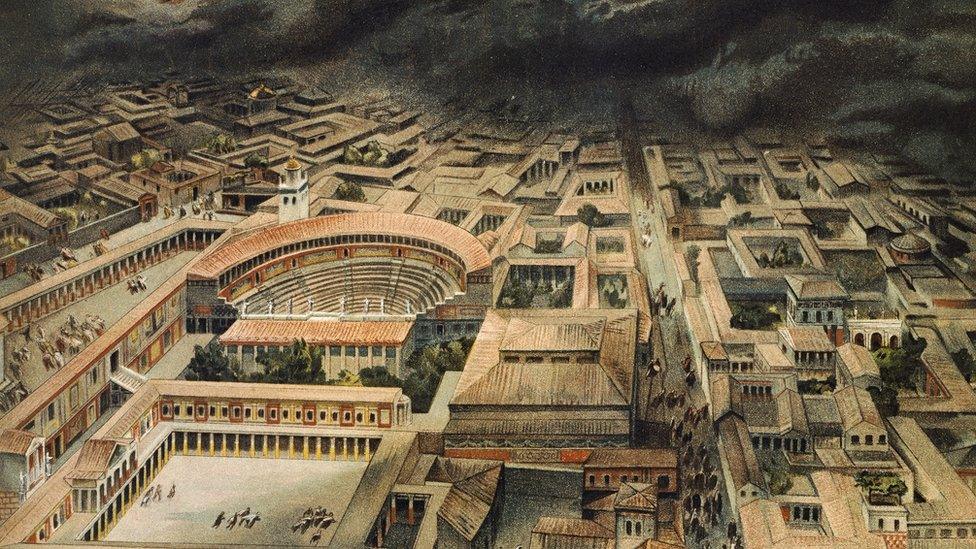Pompeii: Dig uncovers remains of rich man and slave killed by Vesuvius
- Published
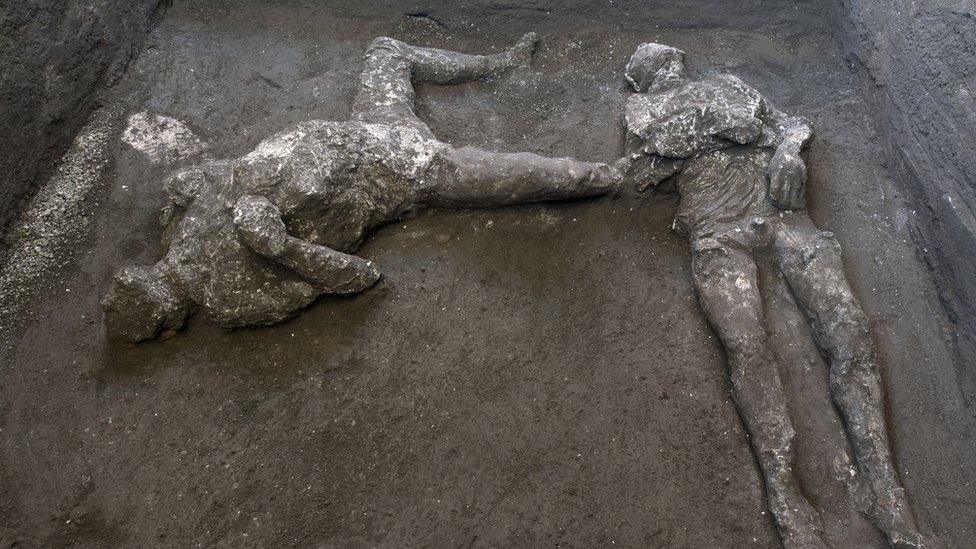
The discovery was made in a villa on the outskirts of the ancient Roman city
Archaeologists have uncovered the remains of two men who died in the volcanic eruption that destroyed the ancient Roman city of Pompeii nearly 2,000 years ago.
One was probably a man of high status, and the other his slave, officials at the Pompeii archaeological park said.
They "were perhaps seeking refuge" from the eruption "when they were swept away", director Massimo Osanna added.
Pompeii was engulfed by a volcanic eruption from Mount Vesuvius in AD 79.
The eruption buried Pompeii in ash, freezing the city and its residents in time, and making it a rich source for archaeologists.
The latest discovery was made this month during an excavation of a large villa on the outskirts of the ancient city.
Officials said the wealthy man was aged between 30 and 40. Traces of a warm woollen cloak were found beneath his neck.
The other man was aged between 18 and 23. Officials at the archaeological site said crushed vertebrae indicated that he was a slave who did manual labour.
Casts were created using impressions the victims' bodies had made in the hardened ash.
"It is a death by thermal shock, as also demonstrated by their clenched feet and hands," Mr Osanna told reporters.
He described the discovery as "an incredible and extraordinary testimony" of the morning when the eruption took place.
Excavation work is continuing at the archaeological site, located near Naples, but it remains closed to tourists because of coronavirus measures.

You might also be interested in:
Archaeologists open a coffin to reveal a mummy, dating back over 2,500 years
- Published12 August 2019
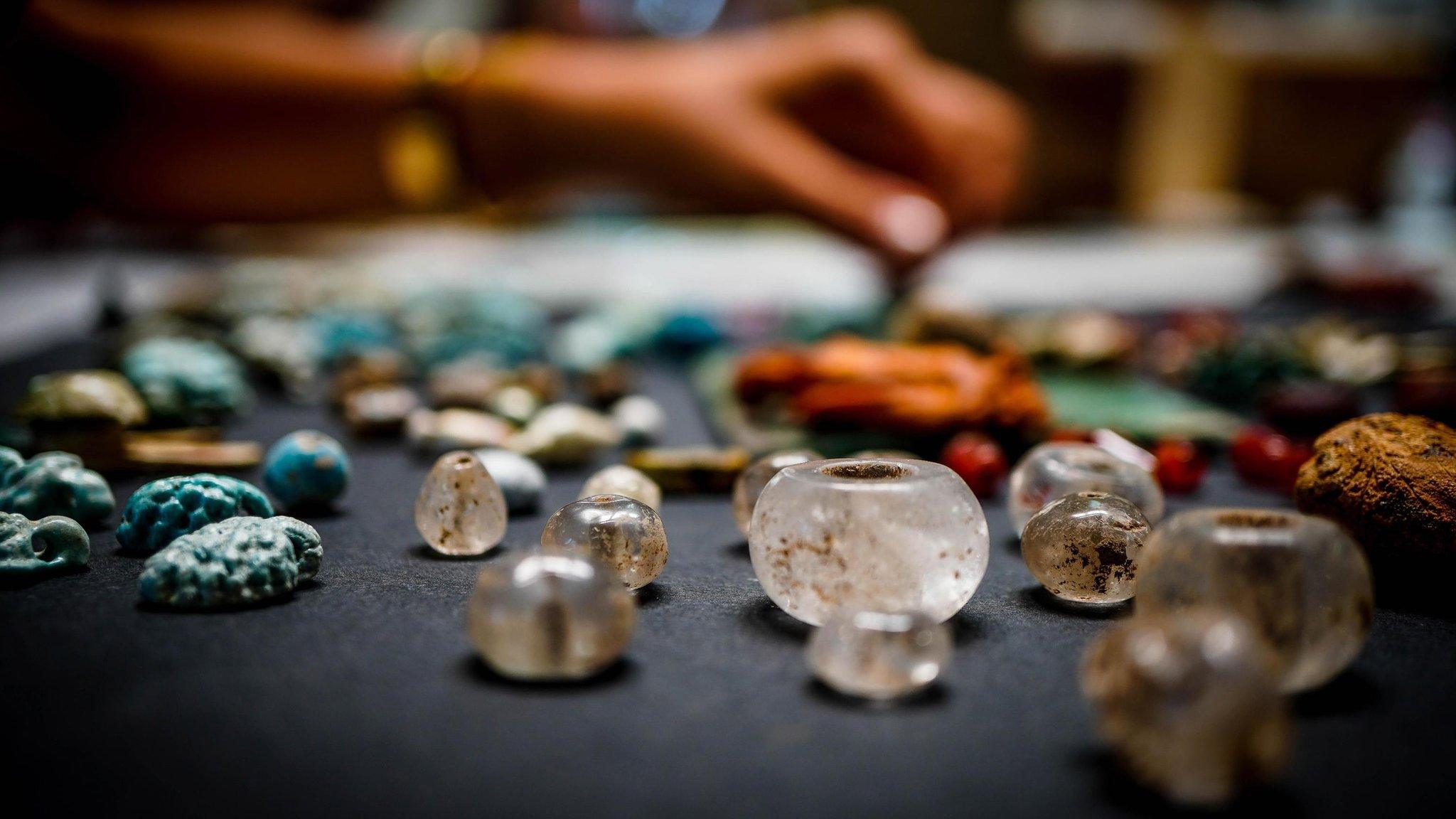
- Published24 December 2018
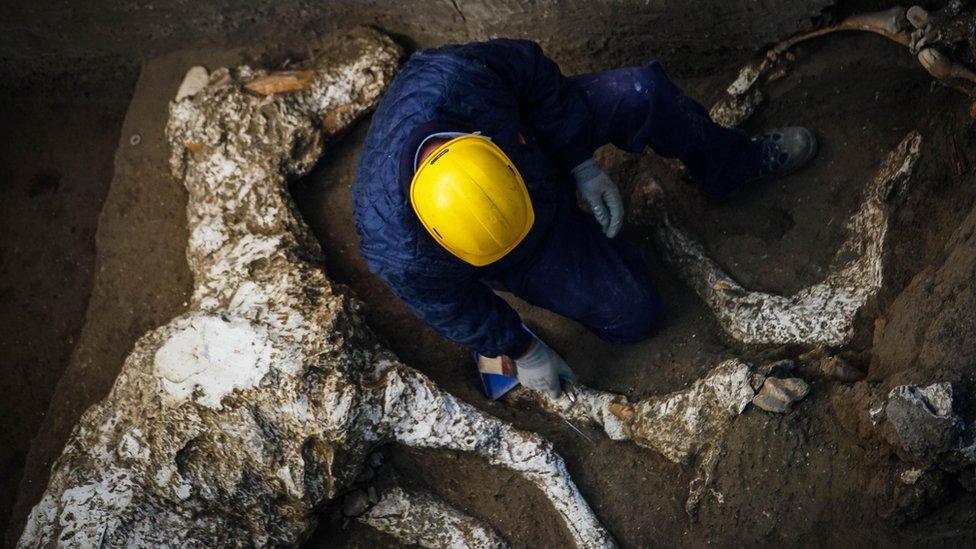
- Published23 January 2020
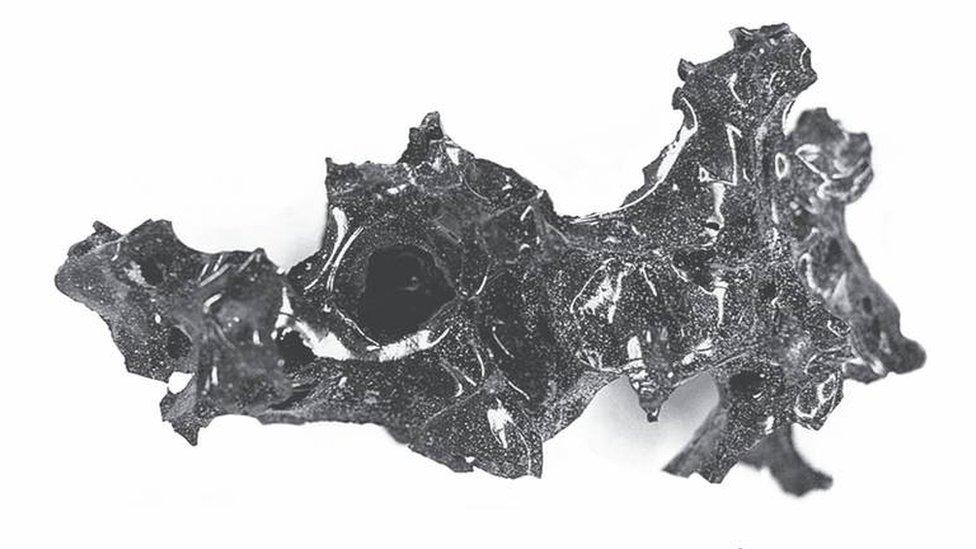
- Published16 October 2018
